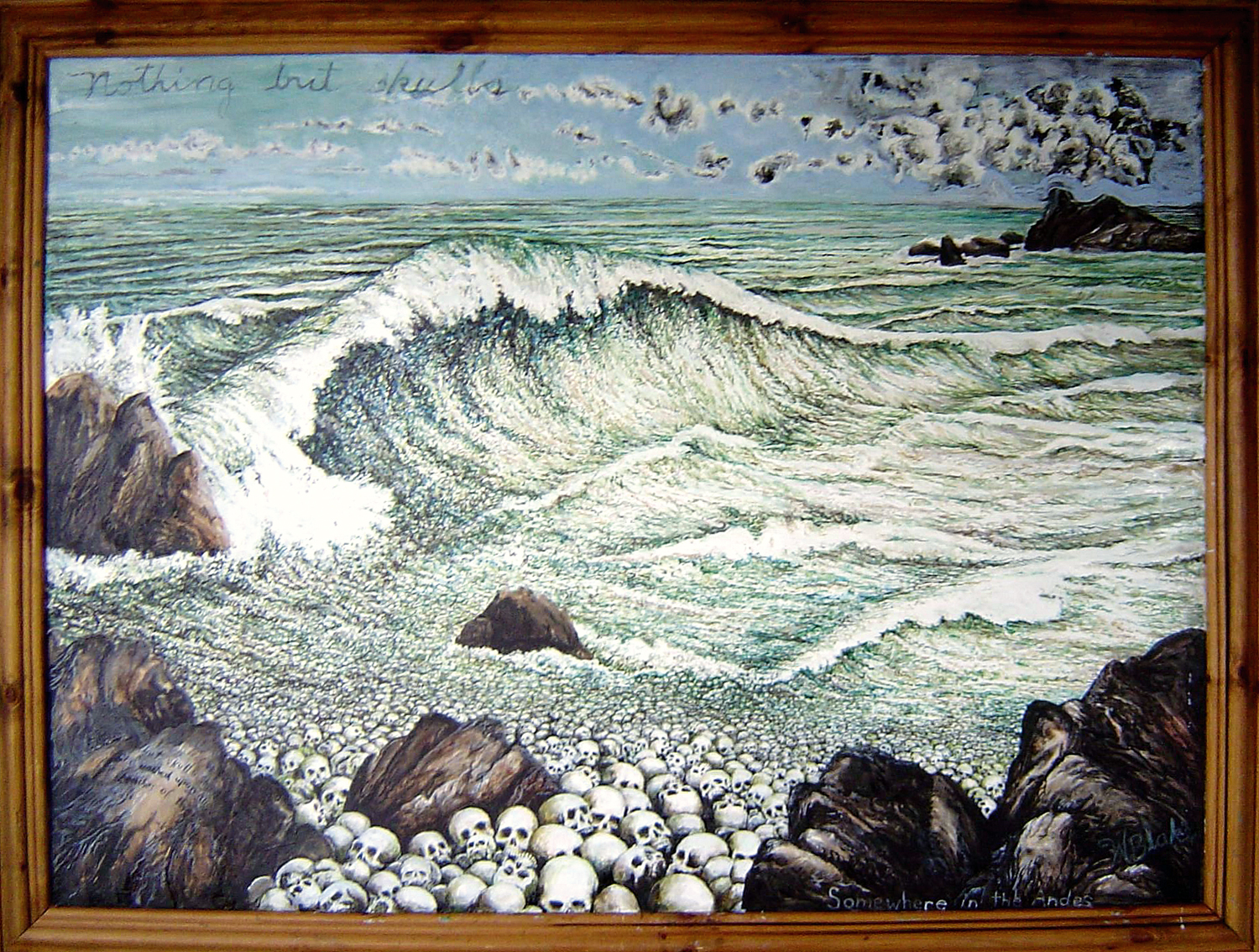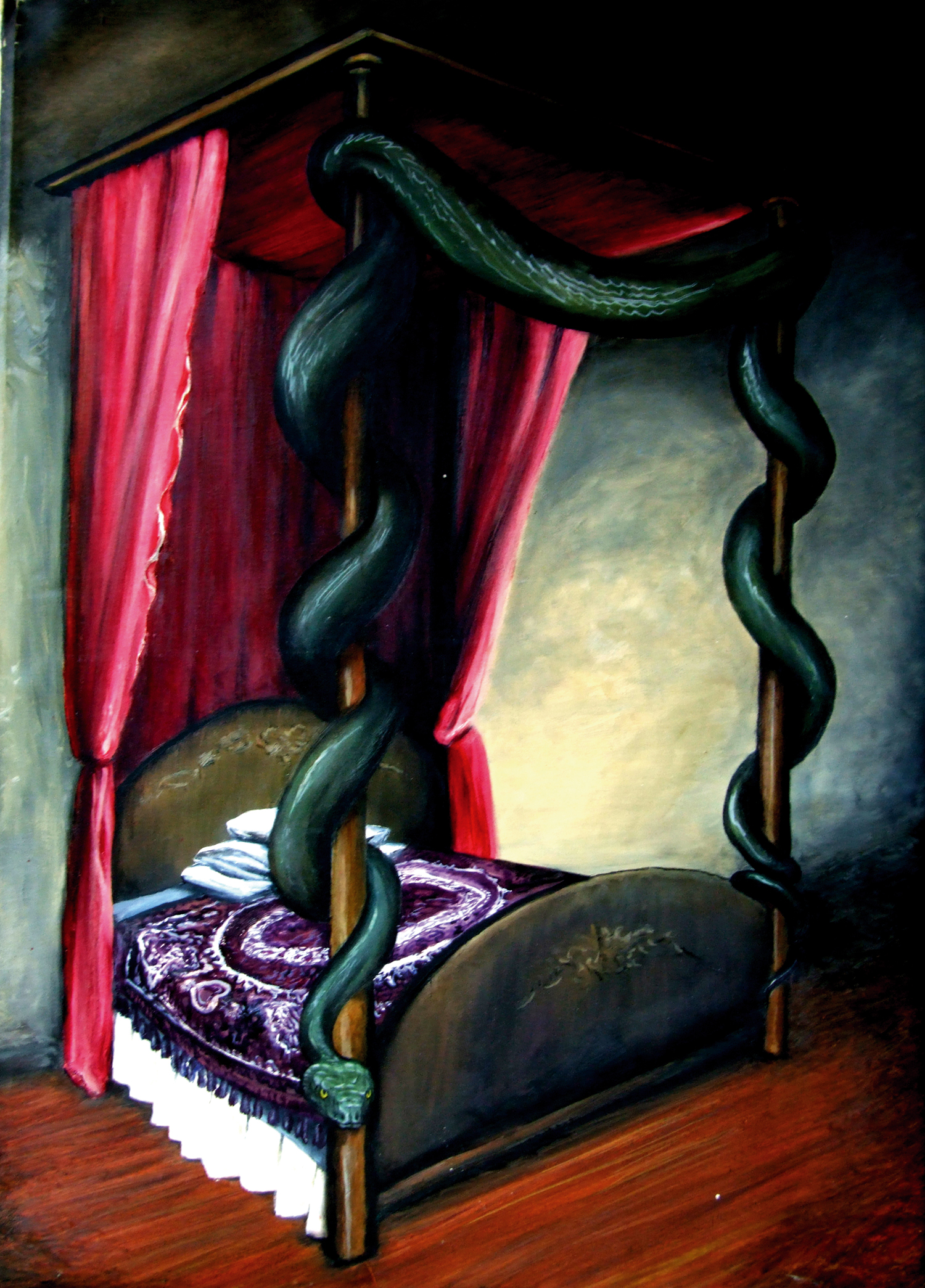Purple Magazine
— F/W 2007 issue 8
Robert Hawkins
 Path to hell, oil on canvas, 2007
Path to hell, oil on canvas, 2007
 Sea of Skulls, oil on canvas, 2007
Sea of Skulls, oil on canvas, 2007
 Snake on Bed, oil on canvas, 1994
Snake on Bed, oil on canvas, 1994
What about Robert Hawkins? I have always been a fan of Robert Hawkins. A secret admirer. It was an art crush. I didn’t really know him, and for years I guess I was almost scared of him.
photography by KATE SIMON
text by GLENN O’BRIEN
Not that I thought he was going to knife me or bite me or something, although he really did look like a scary punk, a vocational werewolf, with his fierce Mohawk—a really good one—and his raffish motorcycle jacket with the rude stuff written on it, and his big paratrooper boots and major tattoos and real fangs and nose ring and a kilt! A sort of generally forbidding presence, enhanced by a…
-

The Entrance to Hell in Springtime, watercolors, 2007
-

Snake looking at Candle, oil on canvas, 2007
-

Half-burned Building, watercolors, 2007
-

Monk in Chains, oil on canvas, 2007
